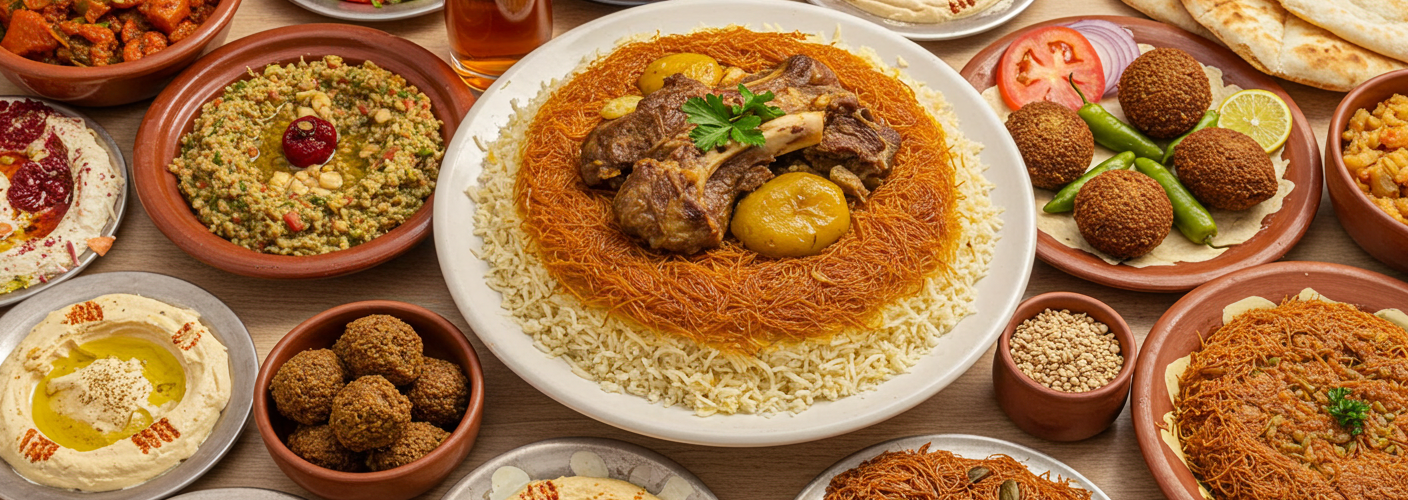Jordan, a country steeped in history and surrounded by breathtaking landscapes, is equally rich in culture and flavor. The culinary traditions of Jordan reflect its diverse heritage, with influences from the surrounding regions and generations of hospitality woven into the fabric of its food culture. This article aims to unveil the delicious offerings of Jordanian cuisine, inviting everyone to experience the flavors of this vibrant nation.
One of the most iconic dishes in Jordan is Mansaf, often considered the national dish. This dish is a true testament to Jordanian hospitality and culture. Mansaf consists of tender lamb cooked in a tangy yogurt sauce, served atop a bed of aromatic rice and garnished with pine nuts. Traditionally, it is presented on a large platter and enjoyed communally, showcasing the importance of sharing meals in Jordanian society. The unique blend of spices and the use of fermented yogurt create a rich and savory flavor that captures the essence of Jordanian cuisine.
Moving beyond Mansaf, Maqluba is another popular dish that offers a glimpse into Jordanian home cooking. Literally meaning “upside down,” Maqluba is a rice dish layered with meat (often chicken or lamb), vegetables, and an array of spices. After cooking, the dish is flipped upside down to reveal a beautiful and flavorful presentation. It’s a dish that exudes warmth and comfort, making it a favorite for family gatherings and special occasions.
Vegetables also play a significant role in Jordanian cuisine, and one can’t talk about Jordanian food without mentioning Falafel. Made from ground chickpeas, garlic, and a medley of spices, falafel is typically shaped into small balls and deep-fried to achieve a crispy exterior while retaining a tender inside. Served in pita bread with tahini sauce, pickles, and salad, falafel is a staple street food that showcases the country’s love for fresh ingredients.
No culinary exploration of Jordan would be complete without experiencing the traditional Hummus. This creamy dip, made from blended chickpeas, tahini, garlic, and olive oil, is a common appetizer in Jordanian households. Each family has its unique recipe and method of preparation, and it is often served with warm pita bread. Hummus has gained international acclaim, and its popularity highlights the universal appeal of Jordanian flavors.
For dessert, one must savor Kunafa, a sweet treat that embodies the artistry of Jordanian confectionery. Kunafa features layers of shredded pastry soaked in syrup and often filled with cheese or cream. Its delicate texture, paired with the sweetness of the syrup, makes it an irresistible dessert that tantalizes the senses. Often enjoyed with mint tea, it is a perfect end to any meal.
Jordan’s culinary landscape also reflects its diverse cultural influences, including Bedouin traditions and Palestinian roots. Street food markets and local restaurants often showcase seasonal produce, with dishes changing to accommodate what’s fresh and available. This commitment to local ingredients and traditional methods ensures that Jordanian cuisine remains authentic and ever-evolving.
In conclusion, Jordanian cuisine is a delightful tapestry of flavors, textures, and traditions that tell the story of its people. From hearty mains to savory snacks and exquisite desserts, there is something for everyone to enjoy. Whether you’re exploring the bustling markets of Amman or dining with locals, the experience of Jordan’s food culture will surely leave a lasting impression. So gather your loved ones, share a meal, and embark on a culinary journey through the heart of Jordan.




Add comment